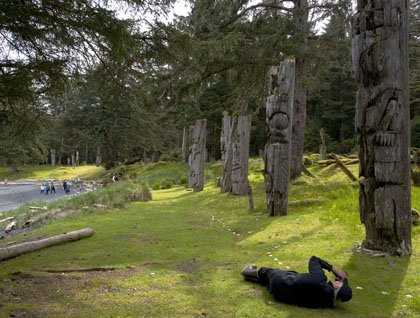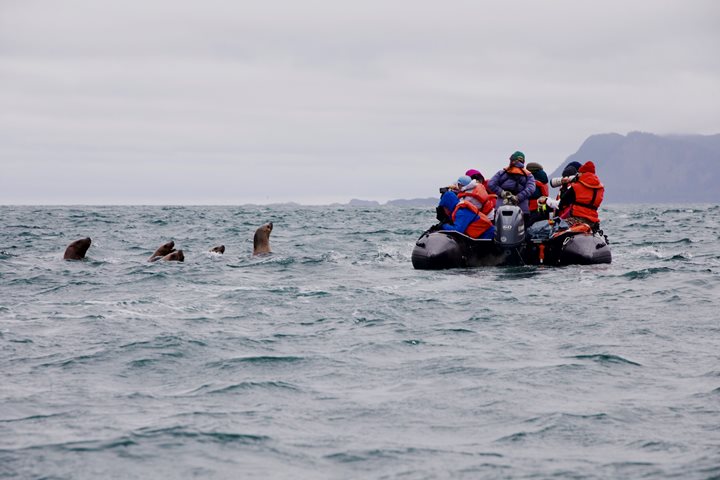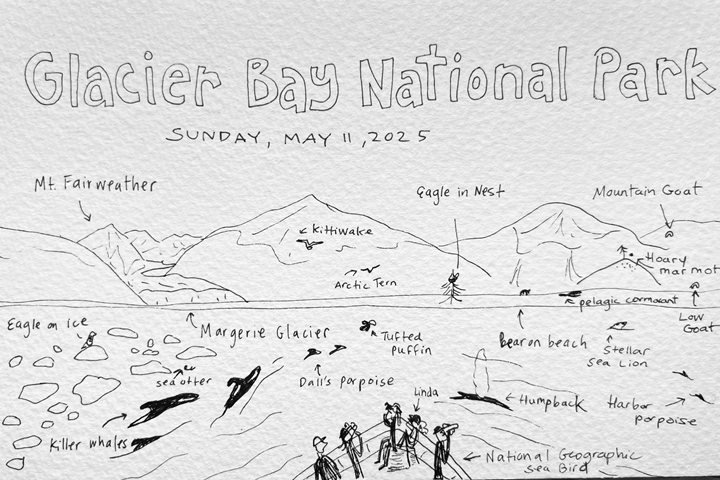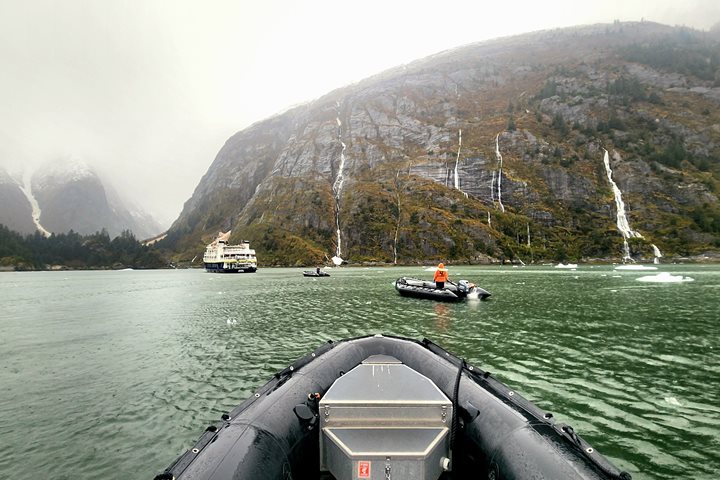After a very calm passing across Hecate Strait the National Geographic Sea Lion arrived at her anchorage at the southern entrance to SGang Gwaay, an old Haida village site on Anthony Island. The Haida name means wailing town island, taken from the sound of wind and sea through a set of rocks on the beach just outside the village site.
Due to the restrictions of Canada Parks our group of 51 guests and crew would be divided into many groups that would take turns visiting this ancient village site and then enjoying a Zodiac cruise around this tiny island. After breakfast announcements, groups began the short journey by Zodiac over to a beach, just below a side entrance to SGang Gwaay, where, a long time ago, 300 Haidas made their home. Today, human occupation and use is evident and visible in the forms of midden sites, upright and fallen poles, house pits, and standing posts and beams of Big Houses. At the peak of SGang Gwaay occupation there were 20 such Big Houses built just above the beach, along with memorial, frontal, and mortuary poles. Our group arrived at low tide and along the beach in front of the mortuary poles we could still see canoe runs dug deeply into the sand and rocks of the beach. In 1981, SGang Gwaay was named a UNESCO World Heritage Site, a status that brings preservation for many generations to come. Today, many mortuary poles and the internal posts of several chiefs’ houses remain standing after the village was abandoned in 1878.
Arriving on the beach via Zodiac, we were greeted by three Watchman. During the early months of summer Walter, Ken, and James are assigned the tasks of guiding groups of visitors and taking care of this very important historic Haida site. From mowing the grass to removing lichens and moss from poles to simply being present, watching over this place of ancestors, these men maintain their posts and continue telling the story of the past as it moves towards the future.
The light was spectacular! Time was given to all photographers who were, of course, very excited about the chance to see and capture totem poles. What an honor to take a moment having traveled a long distance to make images of a place that has been stopped in time. The poles are aging, but are kept safe by the Watchman for people like ourselves to photograph, to just stand in front of, taking a unique opportunity to view and also learn the history so generously offered by our hosts. More important, the Haida people whom we continue to encounter throughout Haida Gwaii are talking about their heritage, their ancient sites and where and how this will lead into their future.
As one of our traveling companions said, “why would people as talented and integrated into their world as the Haida have anything to do with our little boats traveling north along the Northwest Coast?” She mused, “it is intangible...we are ambassadors going out into the world, sharing the Haida story, witnessing through our own eyes...a living culture.” As we listened to story after story from our Watchmen we were reminded again that telling your own story is by far the best way to get to know and relate to others whose worlds are so vastly different from our own.









